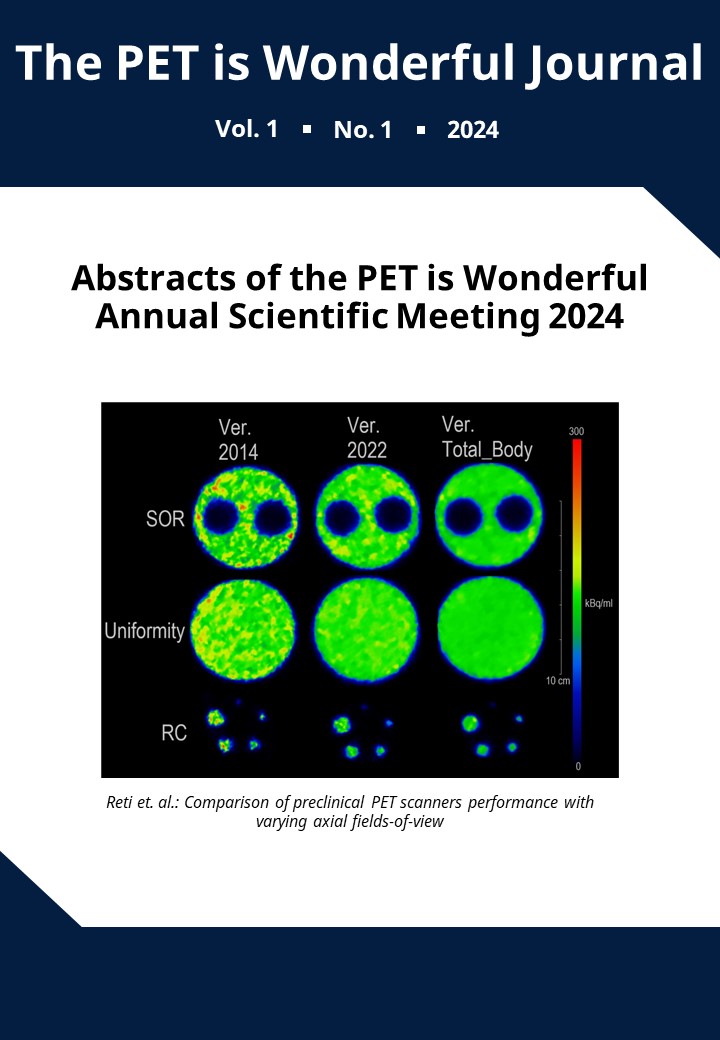Automated segmentation pipeline for segmentation and characterising metabolic dysregulation in cancer cachexia
DOI:
https://doi.org/10.2218/piwjournal.9901Abstract
Cancer cachexia disrupts metabolic homeostasis across various organs. Positron Emission Tomography (PET) is valuable for investigating cachexia in preclinical models and patients[1]. However, manually segmenting multiple organs is laborious and hinders quantitative analysis of whole-body PET. This study establishes an automated pipeline for segmenting and characterizing organs in preclinical PET/MRI.
Acute metabolic changes were induced in non-tumour bearing mice through three approaches: a single dose of Growth Differentiation Factor-15 (GDF-15; n=3 treated, control), daily dexamethasone for 24 days (n=4 treated, control), and 20 hour fasting (n=2 fasted, n=2 fed).
[18F]flurodeoxy-glucose PET was used to image whole-body glucose utilisation. To overcome manual segmentation limitations, an automated multi-organ segmentation method was developed for preclinical MRI using nnU-net, an artificial intelligence architecture[2,3]. The nnU-net was trained on 18 preclinical MRI scans with 21 manual tissue annotations. Evaluation on 8 additional mice revealed high accuracy (Dice Coefficients: 0.72-0.91 for 17 tissues). Adipose tissues had lower accuracy but retained good specificity. Due to low accuracy, pancreas segmentation was excluded. All mice used for training and testing the nnU-net were imaged with the same protocol, sourced from the described datasets, with additional scans from different time points.
After segmenting the scans, we measured mean Standardized Uptake Values (quantitative measure of metabolic activity) for each tissue. Significant differences (p<0.05) were observed following the various interventions (GDF-15, dexamethasone, fasting) compared to control. Network analysis provided insights into potential inter-organ interactions, while Linear Discriminant Analysis successfully distinguished between each metabolic state.
This study presents a novel method for automated segmentation and analysis within preclinical PET/MRI. This method significantly improves efficiency and provides new analysis of total-body metabolic phenotypes. We are currently applying this approach to explore metabolic changes associated with cancer cachexia, aiming to improve our understanding of systemic metabolic dysregulation in both preclinical models and clinical settings.
Please click on the 'PDF' for the full abstract!
Downloads
Published
Issue
Section
License
Copyright (c) 2024 Lisa Duff, Emma Brown, Fraser Edgar, Manuel Pires, Lalith Kumar Shiyam Sundar , Dmitry Solovyev , David Lewis

This work is licensed under a Creative Commons Attribution 4.0 International License.





